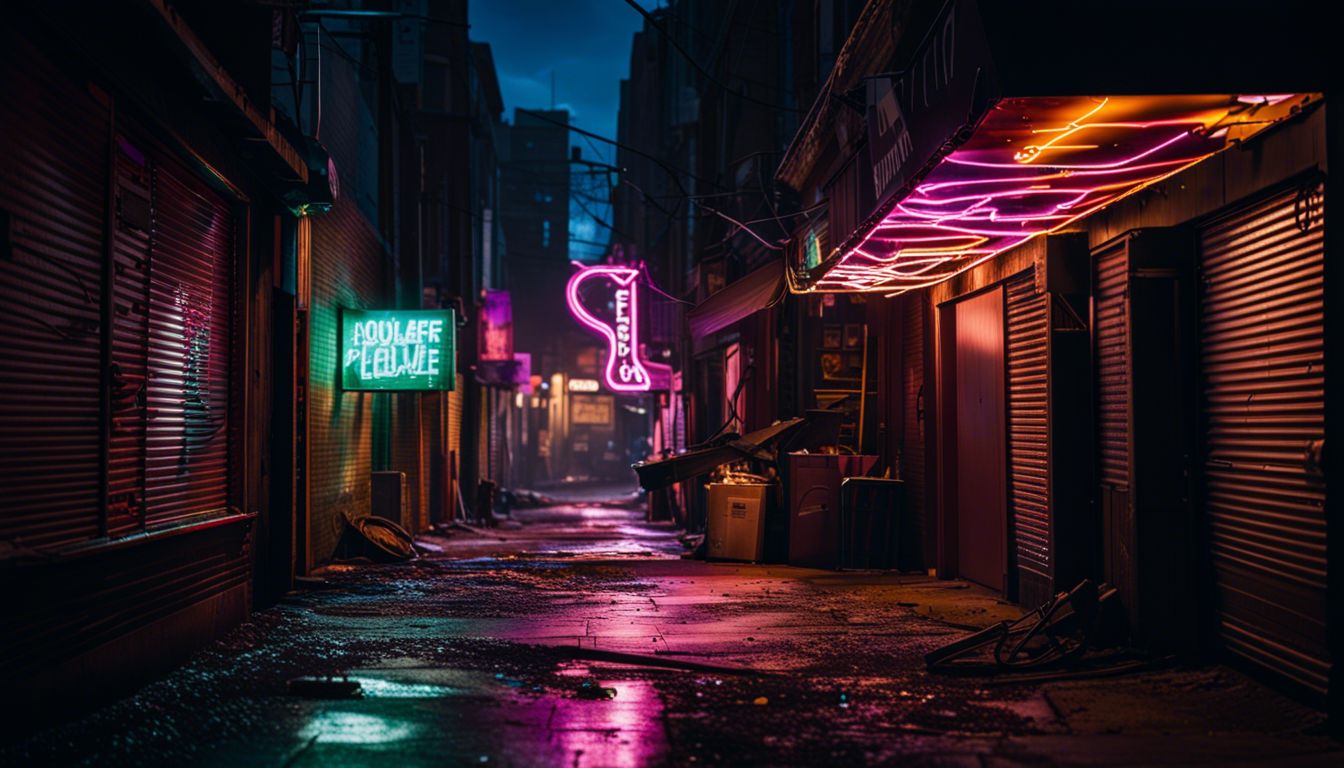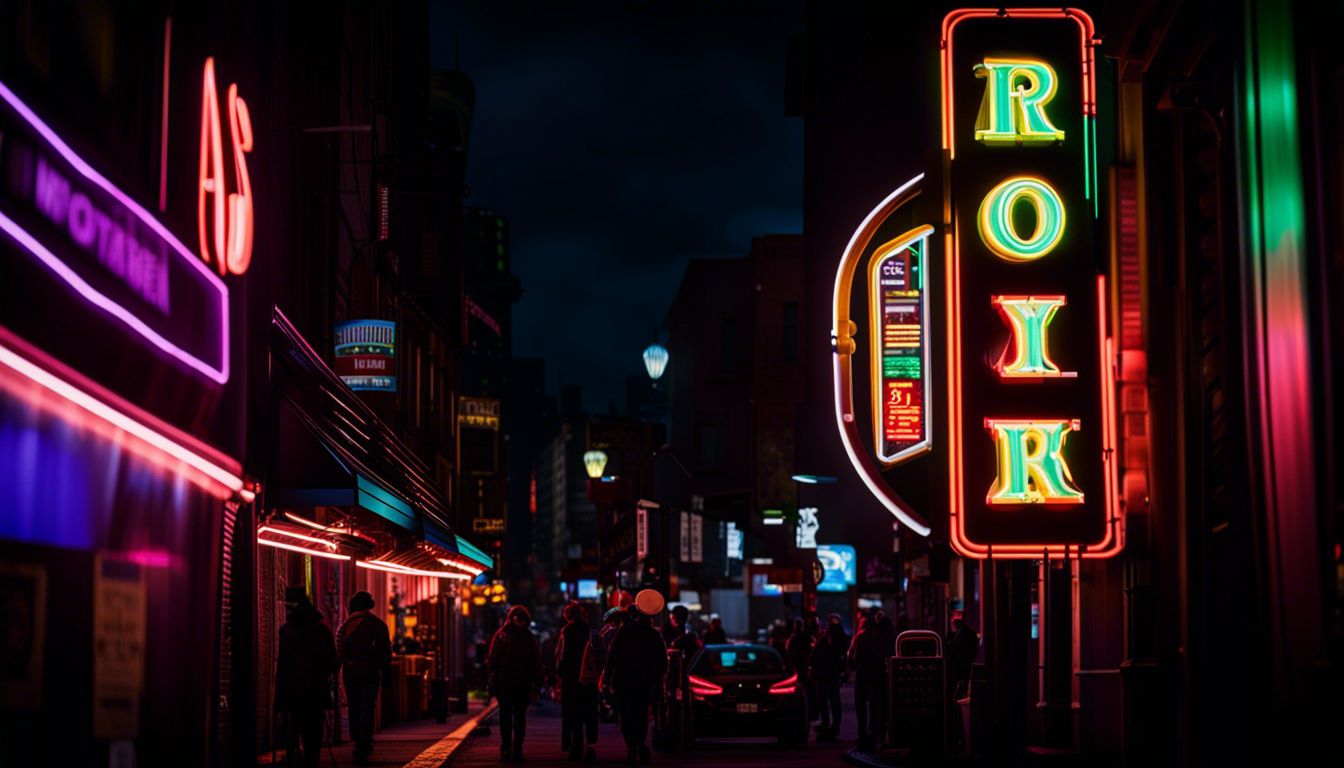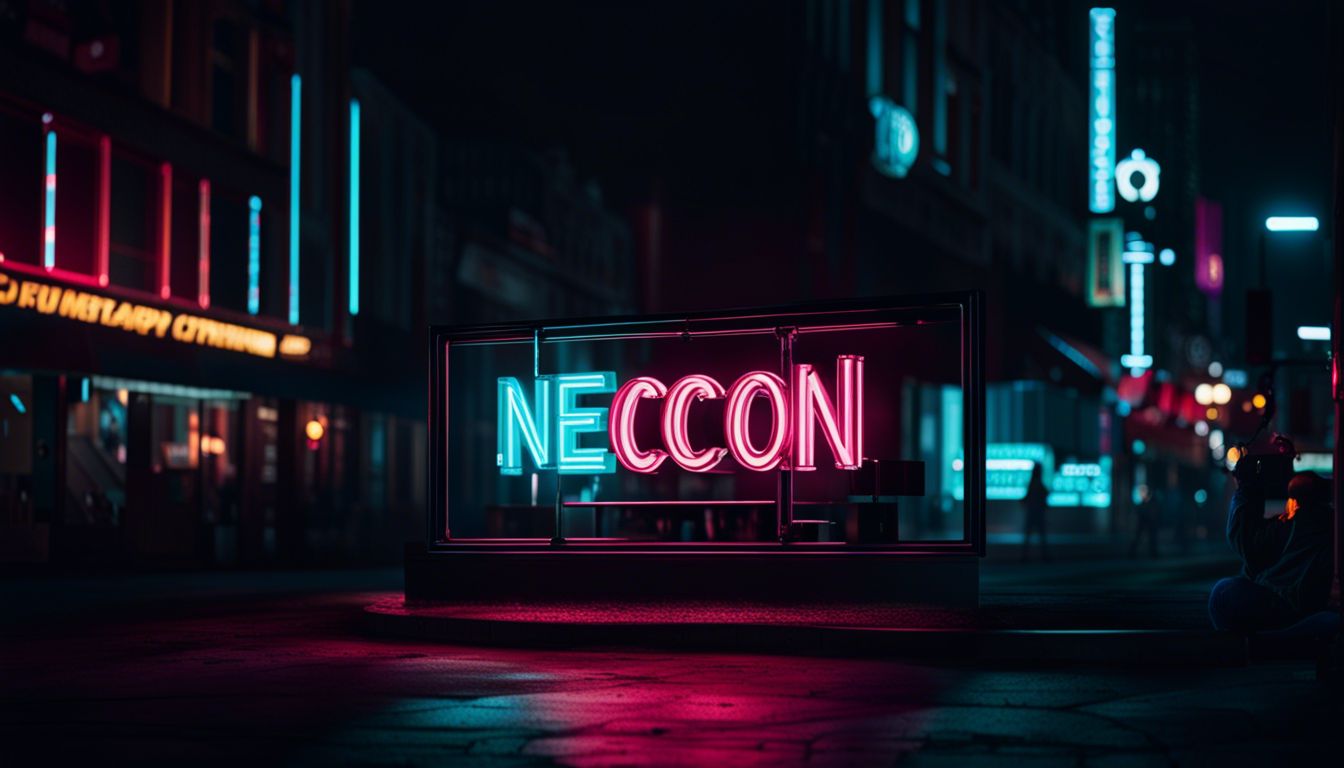From Glowing to Gone? Uncovering the Alarming Disappearance of Neon Sign
Ever noticed the glow of neon signs slowly fading from city streets? In fact, up to 90% of Hong Kong’s vibrant neon signs have vanished over the last twenty years. This blog post aims to shed light on why this iconic part of urban aesthetics is disappearing and what it means for our cities.
Something as bright shouldn’t fade away unnoticed – let’s explore!
Key Takeaways
- Up to 90% of Hong Kong’s neon signs have disappeared over the past two decades due to government regulations and advancements in technology.
- Conservation initiatives are underway by enthusiasts, artists, and community organizations to preserve these iconic signs through preservation projects, art installations, and museum displays.
- The disappearance of neon signs has had a significant cultural impact on Hong Kong, resulting in a loss of nostalgia and character, diminished visual appeal, and negative effects on tourism and local businesses.
The Disappearance of Neon Signs in Hong Kong
Neon signs in Hong Kong have been rapidly disappearing, with up to 90% of them vanishing over the past two decades.
Conservation efforts
Amid the rapid disappearance of neon signs in Hong Kong, conservation initiatives have sprung up to preserve this iconic part of the city’s cultural history. The loss of nearly 90% of these vibrant signs over the past twenty years has not gone unnoticed by local residents and tourists alike.
Numerous enthusiasts, artists, and community organizations are joining forces to give these vintage lights a new lease on life through preservation projects. Not all neon signs that disappear face complete oblivion; some find renewed glory as they become part of art installations or museum displays celebrating traditional craftsmanship and sustainable lighting.
Government regulations
Government regulations have played a significant role in the disappearance of neon signs in Hong Kong. These regulations, aimed at improving the city’s image and reducing light pollution, have imposed restrictions on the usage and installation of illuminated signs.
Neon sign makers are required to obtain permits and adhere to specific guidelines, making it more difficult for them to continue their craft. As a result, many businesses are opting for alternative signage options, such as LED lights, which comply with these regulations but lack the unique charm of traditional neon signs.
The stringent regulations have contributed to the rapid decline of neon signs in Hong Kong’s urban landscape.
Cultural impact
The disappearance of neon signs in Hong Kong has had a significant cultural impact on the city. These iconic lights were not just a form of signage; they were an integral part of Hong Kong’s identity and cultural heritage.
The vibrant and nostalgic glow emitted by neon signs created a unique ambiance that locals and tourists alike associated with the bustling streets of Hong Kong. With their disappearance, there is a loss of nostalgia and character that defined the cityscape for decades.
This diminishing visual appeal affects not only the aesthetic charm but also potentially impacts tourism and local businesses, as these neon signs were often synonymous with certain neighborhoods or establishments.
Reasons for the Disappearance of Neon Signs
Advancements in technology, energy efficiency concerns, and changing aesthetics and trends contribute to the disappearance of neon signs.
Advancements in technology
Advancements in technology have played a significant role in the disappearance of neon signs. With the rise of LED technology, businesses now have access to more energy-efficient and cost-effective signage options.
LED signs require less maintenance and consume less electricity than traditional neon signs. This has made them a popular choice for businesses looking to reduce their environmental impact and operating costs.
Additionally, advancements in digital signage allow for more dynamic and customizable displays that can attract customers in new ways. As a result, many businesses have chosen to replace their neon signs with these modern alternatives, leading to the decline of this iconic form of advertising.
Energy efficiency concerns
The disappearance of neon signs in Hong Kong can be attributed to a variety of factors, one of them being energy efficiency concerns. As the world becomes more conscious of its environmental impact, traditional neon signs are seen as energy-intensive and inefficient compared to newer lighting technologies.
Neon signs consume a significant amount of electricity due to their high voltage requirements and continuous operation. This not only contributes to higher energy consumption but also increases carbon emissions.
With the rise of LED signage which offers greater energy efficiency and durability, businesses are opting for these alternatives instead. The push for sustainable lighting solutions has undoubtedly played a role in the decline of neon signs in Hong Kong’s urban landscape.
Changing aesthetics and trends
With the fast-paced development of technology and changing cultural aesthetics, the demand for neon signs has declined. In the past, these glowing symbols were seen as a vibrant expression of Hong Kong’s urban landscape, but now businesses are opting for sleeker, more modern signage options.
The rise of LED signage, which offers greater flexibility and energy efficiency, has also contributed to the decline in neon sign usage. As trends evolve and businesses seek to align their visual identities with contemporary styles, traditional neon signs have become increasingly obsolete in Hong Kong’s bustling streets.
Impact on Hong Kong’s Identity and Cultural Heritage
The disappearance of neon signs in Hong Kong has had a significant impact on the city’s identity and cultural heritage. It has resulted in the loss of nostalgia and character, diminished visual appeal, and negative effects on tourism and local businesses.
Read more to understand the importance of preserving this iconic feature of Hong Kong’s urban landscape.
Loss of nostalgia and character
The disappearance of neon signs in Hong Kong has resulted in a loss of nostalgia and character for the city. These vibrant and iconic lights were once synonymous with the bustling streets, evoking a sense of nostalgia and charm.
However, as they fade away, so does a piece of Hong Kong’s cultural heritage. The neon signs represented a bygone era and reminded locals and tourists alike of the city’s unique history.
With their absence, there is a noticeable void in the urban landscape, leaving many longing for the days when these luminous displays illuminated the night sky.
Diminished visual appeal
The disappearance of neon signs in Hong Kong has resulted in a diminished visual appeal throughout the city. These iconic lights, once vibrant and eye-catching, added character and charm to the urban landscape.
However, with their fading presence, the streets have become less vibrant and more homogenous. Locals have noticed the impact on their surroundings, as the unique ambiance that neon signs provided begins to fade away.
The loss of these vintage signs not only affects the city’s aesthetic appeal but also takes away a beloved part of Hong Kong’s cultural identity.
Effects on tourism and local businesses
The disappearance of neon signs in Hong Kong has had a significant impact on both tourism and local businesses. These iconic lights were not only visually appealing but also served as landmarks, attracting tourists from around the world.
With their fading presence, visitors may find it more challenging to navigate through the city and locate certain shops or restaurants. Additionally, local businesses that relied on these illuminated signs to attract customers now have to find alternative ways to stand out in a crowded market.
The loss of neon signs has created a more homogenous streetscape, making it harder for businesses to differentiate themselves and potentially leading to decreased foot traffic and revenue.
Efforts to Preserve and Revive Neon Signs
Enthusiasts and artists are leading initiatives to preserve and revive neon signs, collaborating with local communities and organizations to ensure the importance of preserving cultural heritage.
Initiatives by enthusiasts and artists
Enthusiasts and artists have taken it upon themselves to preserve and revive Hong Kong’s disappearing neon signs.
- They have formed communities and organizations dedicated to documenting, photographing, and cataloging the remaining neon signs.
- These enthusiasts actively seek out old sign makers and encourage them to share their techniques and knowledge before it is lost forever.
- Artists have also incorporated neon signs into their artwork and installations, raising awareness about the cultural significance of these iconic lights.
- Some enthusiasts are even working with local businesses to restore or recreate vintage neon signs, giving them a new lease on life in the city.
- Through workshops and educational programs, they are passing on the art of neon sign making to younger generations, ensuring that this traditional craftsmanship is not forgotten.
- These initiatives highlight the importance of preserving cultural heritage and maintaining Hong Kong’s unique visual identity.
Collaboration with local communities and organizations
Collaboration with local communities and organizations has been crucial in the efforts to preserve and revive neon signs in Hong Kong. Several initiatives have been undertaken to engage the public and create awareness about the significance of these iconic lights.
- Art exhibitions showcasing the history and craftsmanship of neon signs, organized in collaboration with local museums and galleries.
- Workshops conducted by neon sign makers to teach traditional techniques and skills to enthusiasts and aspiring artists.
- Community – led projects where volunteers come together to restore and maintain vintage neon signs.
- Partnerships with neighborhood associations to identify and protect significant neon sign sites.
- Fundraising campaigns organized by non – profit organizations to support conservation efforts for neon signs.
Importance of preserving cultural heritage
Preserving cultural heritage is crucial in maintaining the unique identity and history of a place. Neon signs hold immense cultural significance, not just as illuminated advertisements but as iconic symbols of Hong Kong’s urban landscape.
These vibrant signs have been an integral part of the city’s visual identity for decades, representing its bustling streets and dynamic atmosphere. Preserving neon signs helps to keep the memories and stories associated with them alive, allowing future generations to appreciate their historical and artistic value.
Additionally, these signs contribute to the authenticity of Hong Kong’s cultural heritage, attracting tourists who are eager to experience the city’s nostalgic charm. By preserving neon signs, we can ensure that this important aspect of Hong Kong’s cultural legacy is not lost forever.
Conclusion
In conclusion, the disappearance of neon signs in Hong Kong can be attributed to a variety of factors including advancements in technology, energy efficiency concerns, and changing aesthetics.
However, the loss of these iconic lights has had a significant impact on Hong Kong’s identity and cultural heritage. Efforts are now being made to preserve and revive neon signs through initiatives by enthusiasts and collaboration with local communities, highlighting the importance of preserving this unique form of craftsmanship and cultural history.
FAQs
1. Why are neon signs disappearing?
Neon signs are disappearing due to advancements in technology, changing consumer preferences, and stricter regulations on energy usage and environmental impact.
2. What technological advancements have contributed to the decline of neon signs?
The rise of LED (light-emitting diode) technology has significantly impacted the popularity of neon signs. LED lights offer greater energy efficiency, longer lifespan, and more versatility compared to traditional neon tubes.
3. How have changing consumer preferences affected the disappearance of neon signs?
Consumers today often prefer modern and sleek designs, which may not align with the retro aesthetic that neon signs provide. Additionally, digital advertising platforms and social media have become popular alternatives for businesses to promote their brands.
4. Are there any regulations or restrictions that have led to the decline of neon signs?
Yes, stricter regulations on energy consumption and environmental impact have played a role in the decline of neon signs. Many cities now enforce lighting ordinances that prioritize energy-efficient options like LEDs over traditional neon signage.






